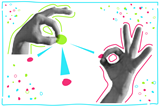Top tips to structure group activities for maximum impact

Active learning is a widely adopted pedagogy, with evidence suggesting a positive impact on student achievement. Group work supports active learning, as well as developing important characteristics such as communication and team-working skills.
Cognitive engagement during group tasks is an important factor in influencing achievement. Other factors that influence engagement are important in maximising learning.
Group size can affect individuals’ learning outcomes, team performance and learning satisfaction. Various studies suggest optimum group sizes of three, four or five students. The type of question or activity also influences achievement outcomes. Research suggests those involving calculations promote lower-order thinking skills than those that are more conceptual in nature.
A study investigated how individual students cognitively engage with group tasks, with the aim of identifying factors that influence the level of engagement. The authors used the interactive, constructive, active and passive (ICAP) framework to measure the level of cognitive engagement by considering students’ behaviours.
In the passive mode, students demonstrate that they receive information, but they don’t manipulate it. In the active mode, students manipulate information without generating new information. In the constructive mode, students generate new information beyond what they have received, involving them making statements that demonstrate the generation of information. In the highest mode, interactive, students generate information through discussions with each other or their teachers.
Algorithmic questions were associated with higher engagement when compared with explanation-type questions
The study involved general chemistry university students. Most groups had three to five students and the instructor and teaching assistants facilitated the sessions. Half of the teaching was lecture based. The other half was activity based, with students working in groups to complete worksheets. These presented models, typically in diagrammatic form, with activities comprising key questions, exercises and problems.
Key questions asked students to identify information explicitly present in the model. Exercises required students to apply the information to perform a calculation or answer a conceptual question. Problems asked students to perform a multi-step calculation or apply the information in a novel way.
Teaching tips
- Establish group work as a regular activity from an early stage to ensure that students get into good routines and habits.
- Reinforce that the aim of group work is to develop the knowledge and understanding of all students. Every individual can bring insights and perspectives to the discussion.
- Explain the benefits of group work, specifically the type of conversations students should engage in. Model this by talking through the specific steps of an algorithmic item involving a calculation or clearly discussing the thought processes behind an answer to a conceptual question.
- When you use worksheets as the basis of group work, set a mixture of algorithmic questions, requiring a step-by-step process, and conceptual explanation-type questions. Include supporting materials to help scaffold the discussion for groups that struggle with the task.
Researchers used two video cameras to capture everybody’s behaviours. They recorded two groups in three sessions, based on the topics solutions and dilutions, periodic trends and molecular polarity. The researchers transcribed the recordings and noted students’ physical actions.
The data provided insights into the dynamics of the groups and their engagement levels with different types of question. The evidence was inconclusive regarding group size, with instances of high and low engagement among groups ranging in size from two to five. Algorithmic questions were associated with higher engagement when compared with explanation-type questions, particularly on the solutions and dilutions task.
The authors recommend students work in smaller groups and with others who have similar levels of knowledge. This will enhance productive conversation and interactive engagement. There was also evidence of groups of four or more splitting into sub groups, limiting the effectiveness of the learning across the group.
David Read
Reference
S Y El-Mansy et al, Chem. Ed. Res. Pract., 2024, 24, doi.org/10.1039/D3RP00279A
References
S Y El-Mansy et al, Chem. Ed. Res. Pract., 2024, 24, doi.org/10.1039/D3RP00279A














1 Reader's comment